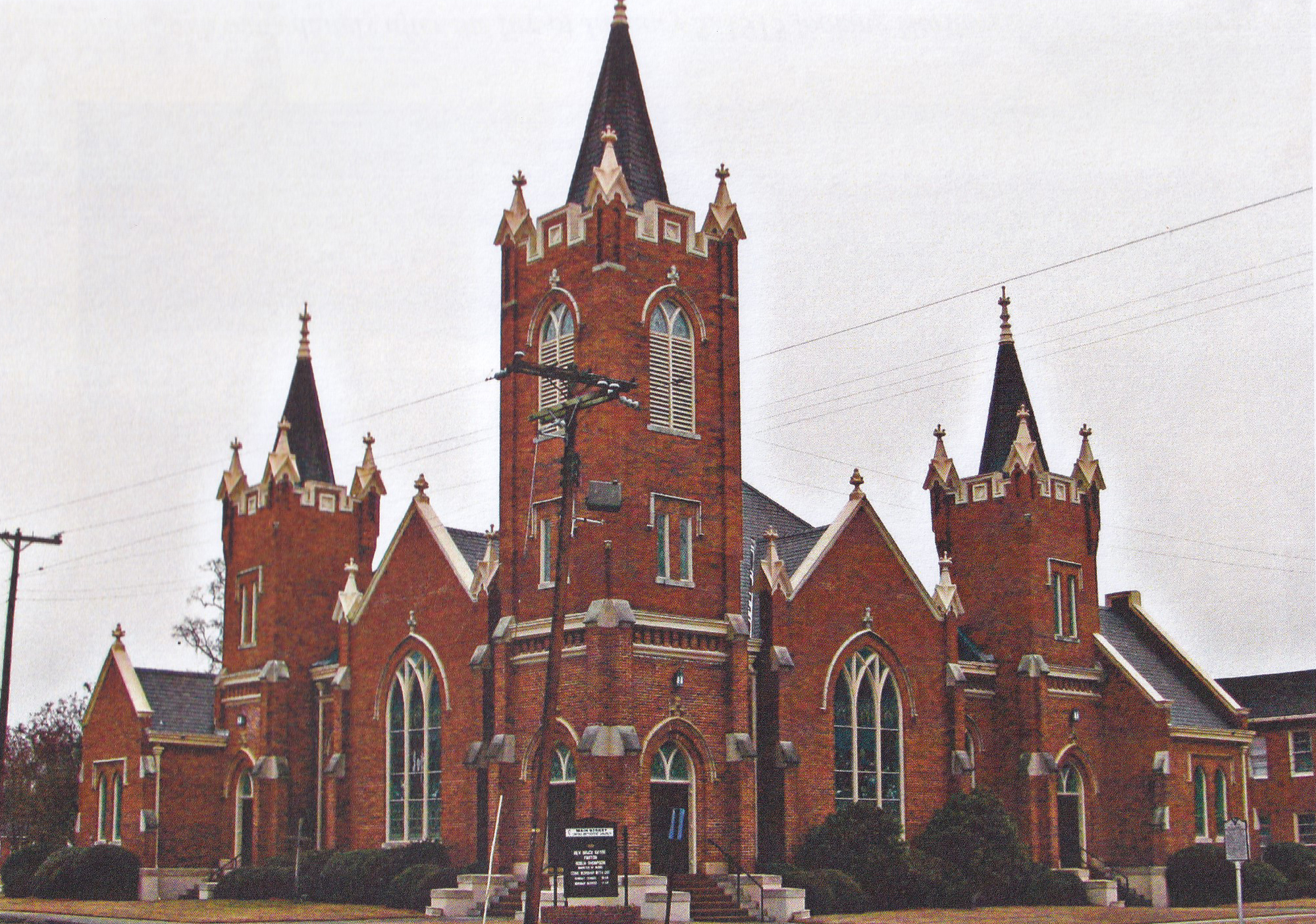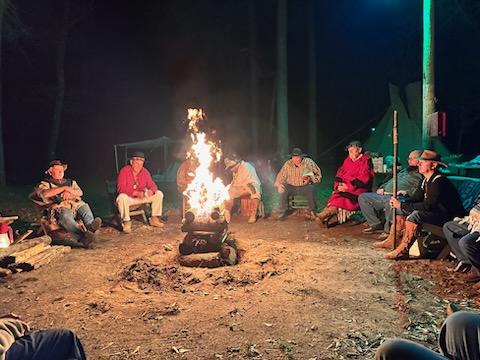Main Street Methodist Church’s history began in 1771, when John Wesley sent his emissary Francis Asbury to the American Colonies to spread God’s Word and build churches. He stayed during the Revolutionary War and traveled throughout the Colonies. In 1786, Liberty Chapel (in Little Rock) and Dothan Methodist Church were founded. Liberty Chapel’s records show that Asbury started it. It is assumed that Asbury probably had something to do with Dothan since it was founded in the same year and was only approximately 5 miles away on the same heavily traveled road. This road was the most direct route to the Marion County Courthouse from Little Rock, and it is thought to be an old Native American foot path. The existing St. Paul’s Methodist Church was constructed in 1871, and the existing Dothan Methodist Church was built in 1855.

Main Street Methodist Church (MSMC) was founded in 1892. J. W. Dillon donated one half of the block where the Dillon County Courthouse sits now. This donation was made before the Courthouse was built. In 1894, the first church building was finished and faced Main Street across from the existing U. S. Post Office. MSMC was put on a circuit with St. Paul’s and Dothan. Later in 1898, as MSMC grew in membership it was made a station (stand alone church) and Rev. C. C. Herbert was appointed as pastor. There is no record of the charter members of MSMC but Dolph Braddy’s history of MSMC noted that he was given a list of charter members by Miss Mary Carter and Mrs. Kate Carter King. The list included M/M W. J. Carter, Andrew F. Carter, Catherine S. Carter, A. J. C. Cottingham, Dr. & Mrs. Thad Weatherly, Lula Weatherly, Thad Weatherly, Will Weatherly, Dr.& Mrs. J. P. Ewing, M/M W. A. Parham, Lula Parham, M/M W. A. Parham, Jr., Billy Hamilton, Frank Jackson, J. W. Dillon, T. A. Dillon, M/M F. B. David, Mrs. J. H. David, M/M Duncan McLaurin, Maxie McLaurin, Jack H. McLaurin, & M/M P. B. Sellers. Dolph Braddy noted in his history that the list he was given was probably not a complete list.
Dillon continued to grow because of the railroad and the business that it generated. People began to move from Little Rock to Dillon. St. Paul’s Methodist Church finally closed in 1949. Dothan Methodist Church had closed earlier in the late 1920’s.
Location of the churches in the City of Dillon: As mentioned earlier, the first church was located directly across the street from the present day post office. The Court House had not been built yet. It was a rather small church, with only three rooms; sanctuary, Sunday School room, and a classroom for small children. A model of this church was built by J. A. Sizemore in 1960 for the Dillon County Semi-Centennial. The model is located in the pew gallery upstairs in Asbury Hall in the present Main Street Methodist Church. The parsonage for the first church was built on the same lot as the church.
When Dillon County was formed, the Dillon family gave the county their half of the block and MSMC sold their half to the county. The steeple of the church was removed and the rest of the church was sold and rolled down to the corner of South 3rd Avenue and Hudson St. where it was converted into a residence. The parsonage was rolled to a lot where the present day rear parking lot for the post office is located.

The second church was located on Main Street exactly where the existing church is located. It burned down in January 1915, only seven months after construction was completed. During the same period a parsonage was built where the existing parking lot is now located. The front door of the parsonage faced Harrison Street and part of the walkway from the house to the street is still there.

The third (existing) church was built on the ashes of the second church using the exact same design as the one that burned and was completed in 1916. The parsonage that faced Harrison Street was demolished in 1956. The house owned by J. B. Gibson where the pickle ball court is now located was purchased for use as a parsonage. It faced Main Street. In 1969, the present parsonage at 1225 David Street was built, and the Gibson house was used as a youth center until it was later demolished.






